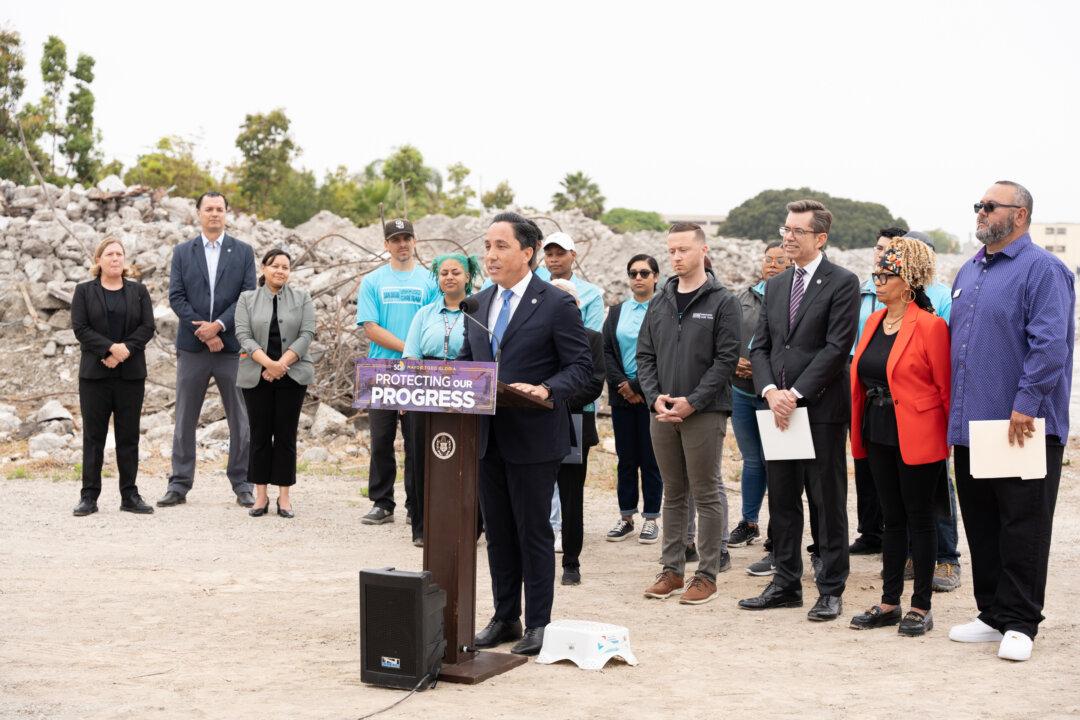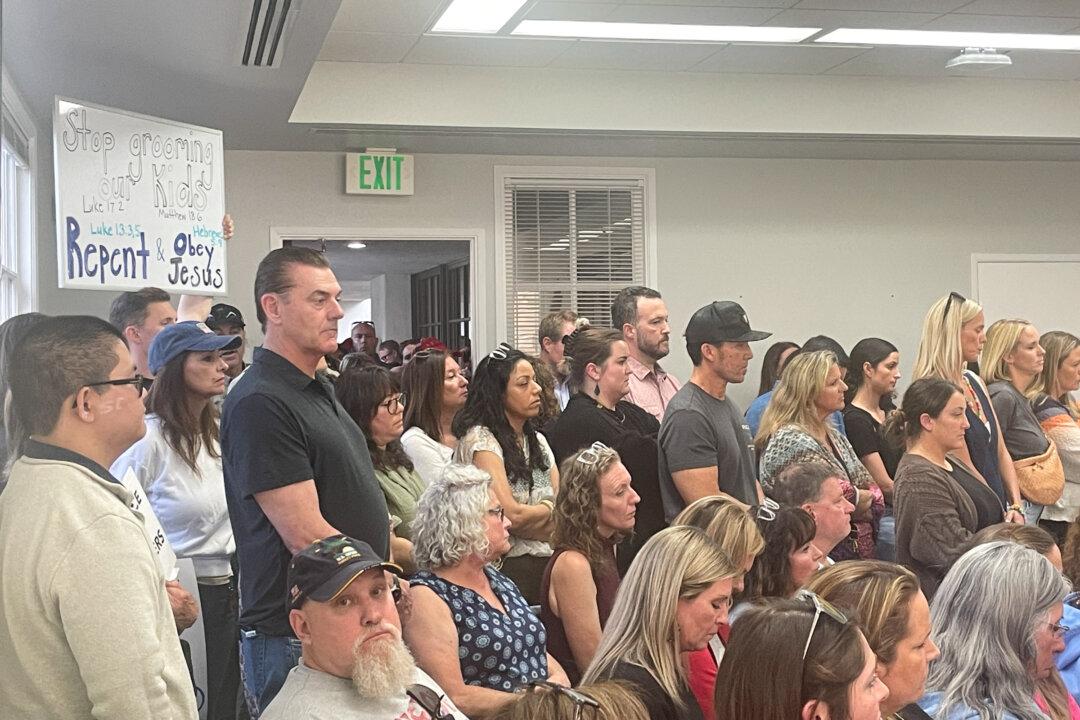San Diego Mayor Todd Gloria held a press conference on June 6 to rally the City Council’s support for his 2025 budget proposal that includes increased funding for homeless issues.
Mr. Gloria’s proposals include a large-scale homeless shelter at a Middletown location, and a “safe parking” lot at a demolished navy barracks site, H Barracks, near the airport, where the press conference was held.
The mayor said his “Protecting our Progress” budget “increases funding in order to continue getting people off the streets and into shelter and care.” The council is scheduled to vote on the budget on June 11.
The city is currently negotiating a lease for the homeless shelter with the owner of vacant commercial warehouse on the corner of Kettner Boulevard and Vine Street. The shelter is projected to hold roughly 1,000 people at a time and will be the largest shelter in the county.
The H Barracks safe parking lot will provide 200 parking spaces for those who live in their vehicles. It is part of the city’s Safe Parking Program, which currently operates 233 parking spaces.

San Diego Mayor Todd Gloria holds a press conference at the H Barracks site, where a safe parking lot for homeless people is proposed. Jane Yang/The Epoch Times
A recent state auditor’s report found that California has failed to track the effectiveness of its billion-dollar spending on homeless programs.
When asked if there is a plan to evaluate his proposals, the mayor said of the H Barracks “safe parking” lot, “this program is proven effective. … We have multiple locations like this all across the city and it has successfully got people out of their cars into permanent housing. … This is one of the most cost-effective interventions we have, and I am so committed to expand our self-parking program.”

Map showing the shelter at Kettner Boulevard and Vine, and the safe parking lot at H Barracks. The Epoch Times
Inhumane and Expensive, say Protesters
About 50 feet from the press conference, outside the fenced off H Barracks site, 20 to 30 locals waved signs and chanted “Free San Diego.” Their signs read “Stop the Mega Homeless Shelter on Kettner & Vine” and “Protect Our Community.”One of the protesters, Vanessa Andrew, called the shelter “inhumane.”
“The plot of land cannot accommodate that many people,” she said.
Ms. Andrew said the location was dangerous. “It’s on a busy street adjacent to a freeway exit. According to [the San Diego Association of Governments], there are between 25,000 to 30,000 cars a day that pass by that building. People exit the freeway driving at 75 mph,” she said.
“If you have homeless people who suffer from mental illness or drug addiction and are not in their proper state of mind, they are going to get hit by a car.
“Think about this: You are driving your kids to school and you get off the freeway and hit a homeless person. The people in that car will be traumatized for the rest of their lives, not to mention the person that’s lost their life.”

Protesters stand outside the H Barracks site during the mayor's press conference. Jane Yang/The Epoch Times
Several protesters expressed their dissatisfaction about not being allowed onto the premises for the press conference. Andrew Hollingworth of Point Loma said, “This is public property, the mayor prohibited the public from getting into his press conference. We’ve asked him to engage with us on this project, he refuses to do so.”
Mr. Hollingworth believes the shelter could “break the city [financially],” according to an analysis done by ProtectPointLoma.org. “It will cost the city $2 billion.”
Patty Ducey-Brooks echoed those sentiments: “I’m representing Old Town, Mission Hills and the surrounding communities. Our elected officials are making very expensive decisions behind closed doors at the cost of the taxpayers, and we are fed up.”
San Diego mayoral candidate Larry Turner was among the protesters. He said Mr. Gloria’s handling of homeless issues follows Sacramento’s “dogmatic approach of housing first. … But you can’t give keys to a person who is living with addictions and problems that got them on the streets … and expect their lives will be magically changed.”
‘Just Doing What We Can’
A homeless person named Scott set up his tent just outside the fence, tucked behind a short bush. He said he has been homeless for 16 years, since his veteran father passed away.Scott said he wouldn’t live in the shelter. “Everybody has their own problems. It’s either drugs or disagreeing with other people. ... When you get a lot of people in one spot, you will have a lot of fights, disagreements, and it can cause a lot of problems.”

A homeless person sits in his tent just outside the H Barracks site. Jane Yang/The Epoch Times
“I would prefer to be by myself where all the problems I have are mine. And I don’t have to put any of my problems on anybody else, or have to accept any of theirs,” he said.
Scott said he is aware of San Diego’s new law banning encampments on streets. But he said he would still not go to a shelter. “Some people would sleep right on the sidewalk in front of a business. I don’t condone that,” he said.
“It’s better to have it so it’s not seen to the public, and you are not a nuisance, and you are not causing any problems. We are just doing what we can to survive.”
If the city forces him out of his current campsite, he said, “I will go somewhere else.”






